53 Hemiptera – Sternorrhyncha
Sternorrhyncha
The last suborder of Hemiptera that we will cover in lab is Sternorrhyncha (“sterno” = “chest”, “rhynch” = “snout”). These insects all have piercing/sucking mouthparts that originate far back on the underneath of the head. All are small, soft-bodied, quite delicate, and are, therefore, best preserved in ethanol. In winged forms, both front and hind wings are membranous. The suborder includes many serious plant pests and vectors of plant pathogens. There are many species with highly coevolved symbiotic relationships, especially with ants.
Psyllidae
Psyllidae are also called jumping plant lice. They often have very highly coevolved relationships with their plant hosts, and many are thought to be monophagous.
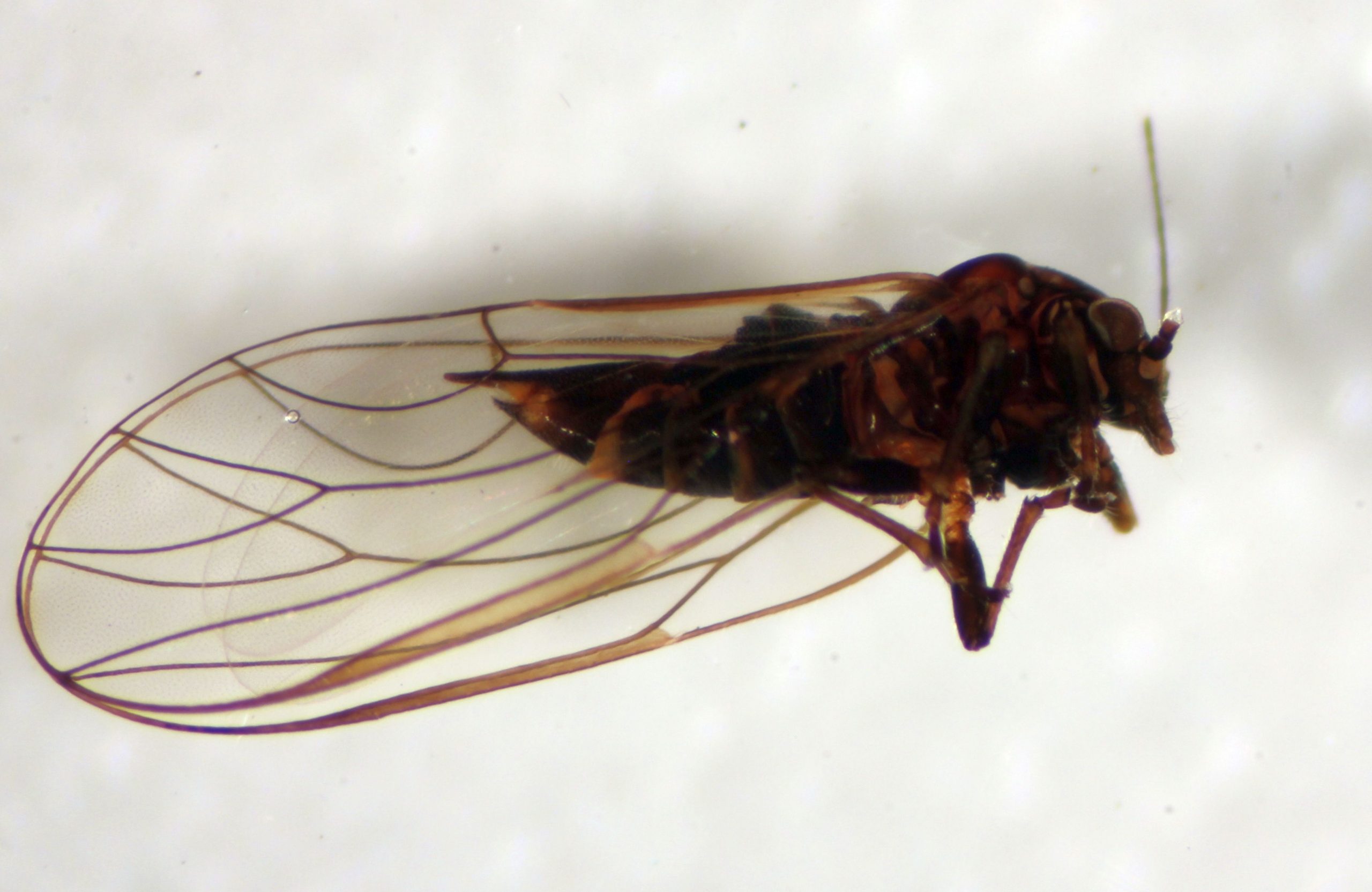
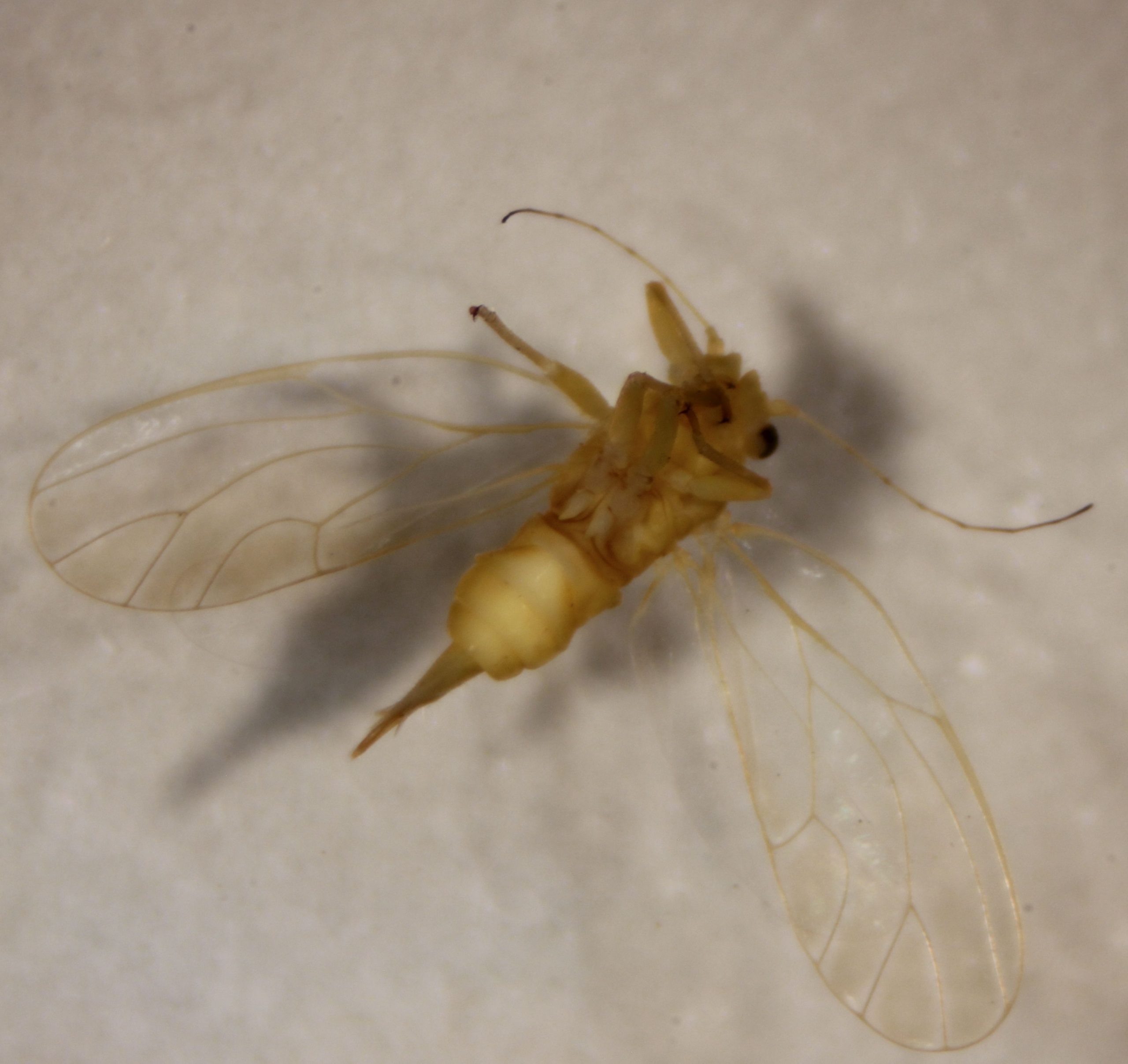
Aleyrodidae
Aleyrodidae, or whiteflies, are important pests in greenhouses. Most are only ~1-2 mm long, allowing them to pass through even fine screening. In some cases, the mesh size will effectively exclude whitefly predators and parasites. They have a modified life cycle with a sessile “pupa” stage. We do not have an intact specimen in the collection.
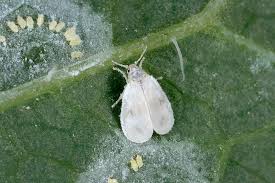
Sicva96, CC BY-SA 4.0 <https://creativecommons.org/licenses/by-sa/4.0>, via Wikimedia Commons
Aphididae
A large, easily recognizable family, the Aphididae includes all of the aphids. Aphids are very important plant pests in many settings, and vector a number of plant pathogens. Many aphids reproduce parthenogenically during periods of good environmental conditions. As environmental cues indicate that conditions are worsening, they start to produce males, mate, and produce overwintering stages. Many of the parthenogenic females lack wings, while males and some females are winged. Female aphids are also often capable of giving birth to live nymphs that may, at the moment of their birth, already be forming the next generation in their ovarioles. Needless to say, population fluctuations can be dramatic!
Aphididae all have cornicles, which project from the posterior abdomen. They function to secrete defensive compounds, and may be flush with the abdomen or project quite a distance.
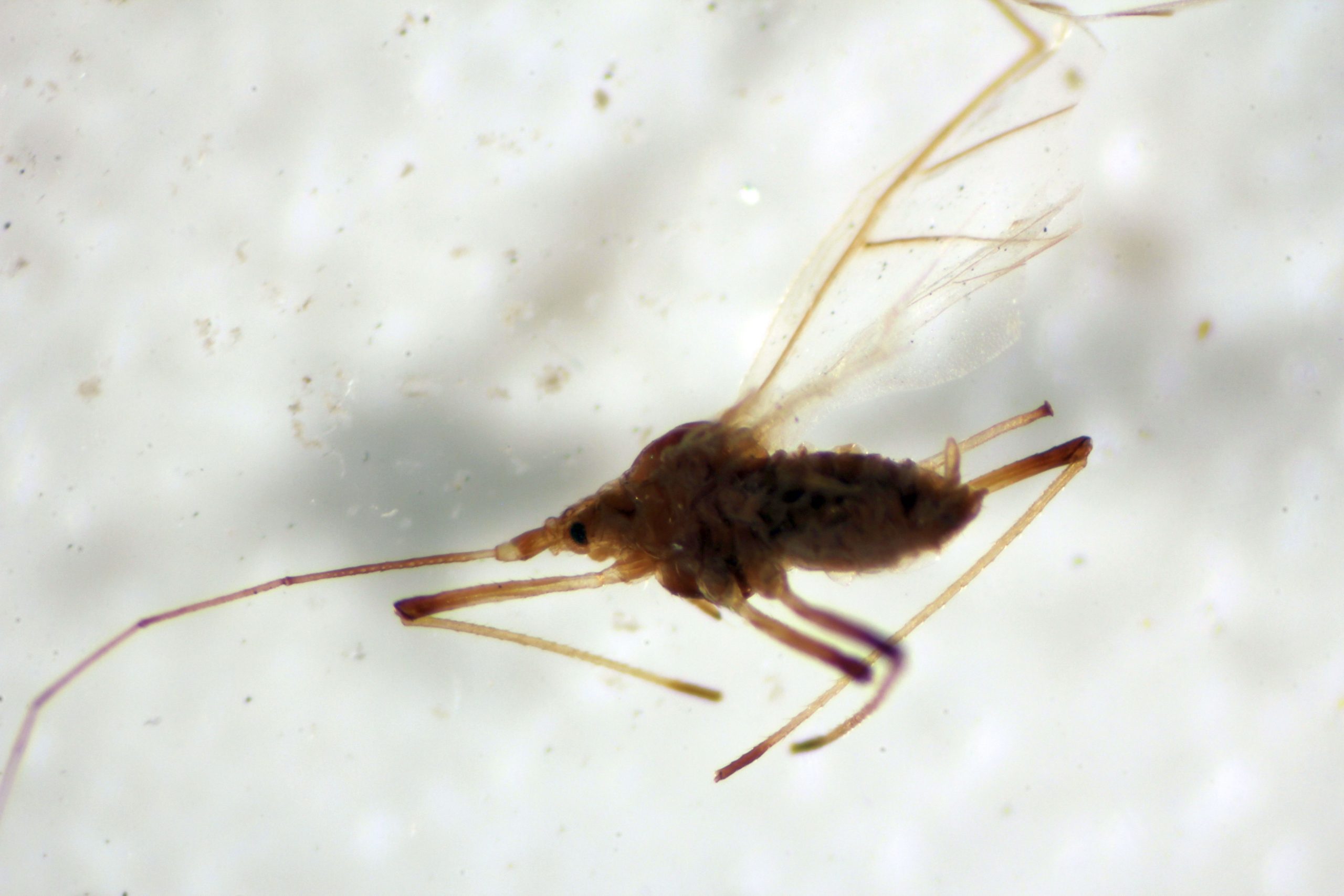
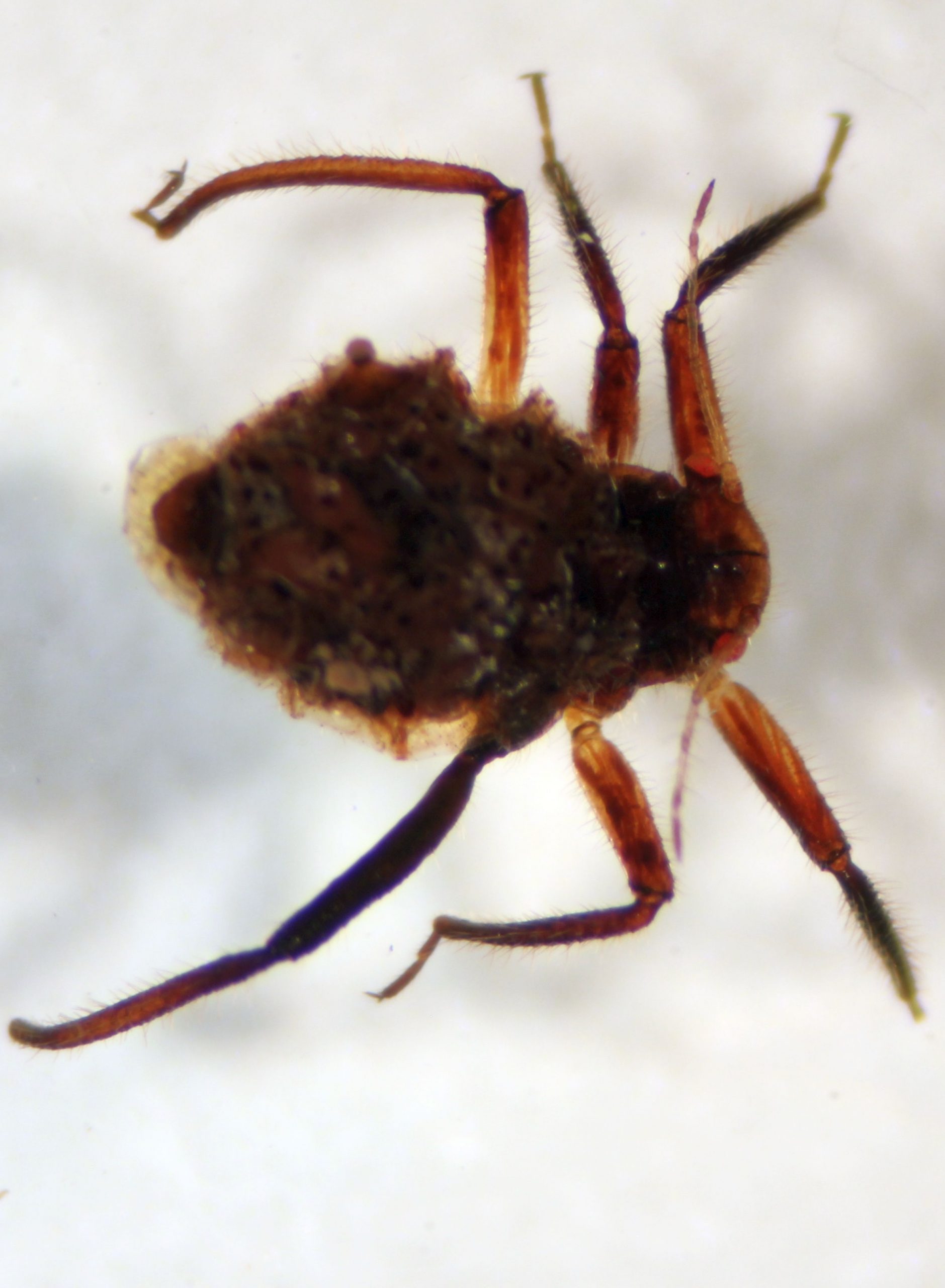
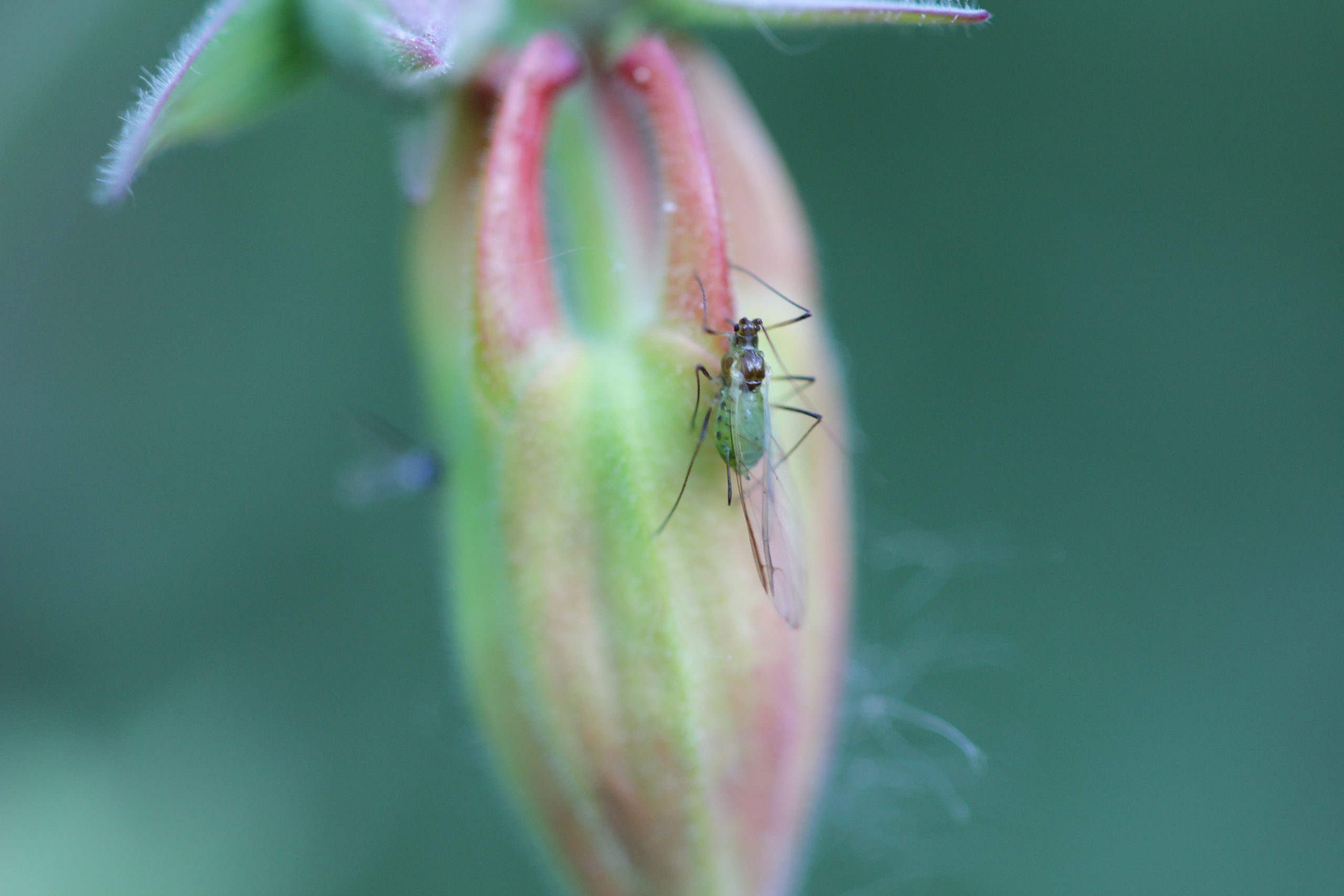
Adelgidae
Adelgidae are often called “woolly aphids”, but are in a separate family (or subfamily in some phylogenies) from aphids. The correct common name is woolly adelgids. Unlike aphids, adelgids do not have projecting cornicles, and they never give birth to nymphs. Several Adelgidae (e.g. the balsam woolly adelgid, Adelges piceae) are important pests of forest trees. They often have complex life cycles, involving more than one host and several generations with different forms and ecologies. Pictured below are the galls of Adelges cooleyi, the Cooley spruce gall adelgid, on hybrid white spruce, and a different life stage of the same insect on Douglas-fir.
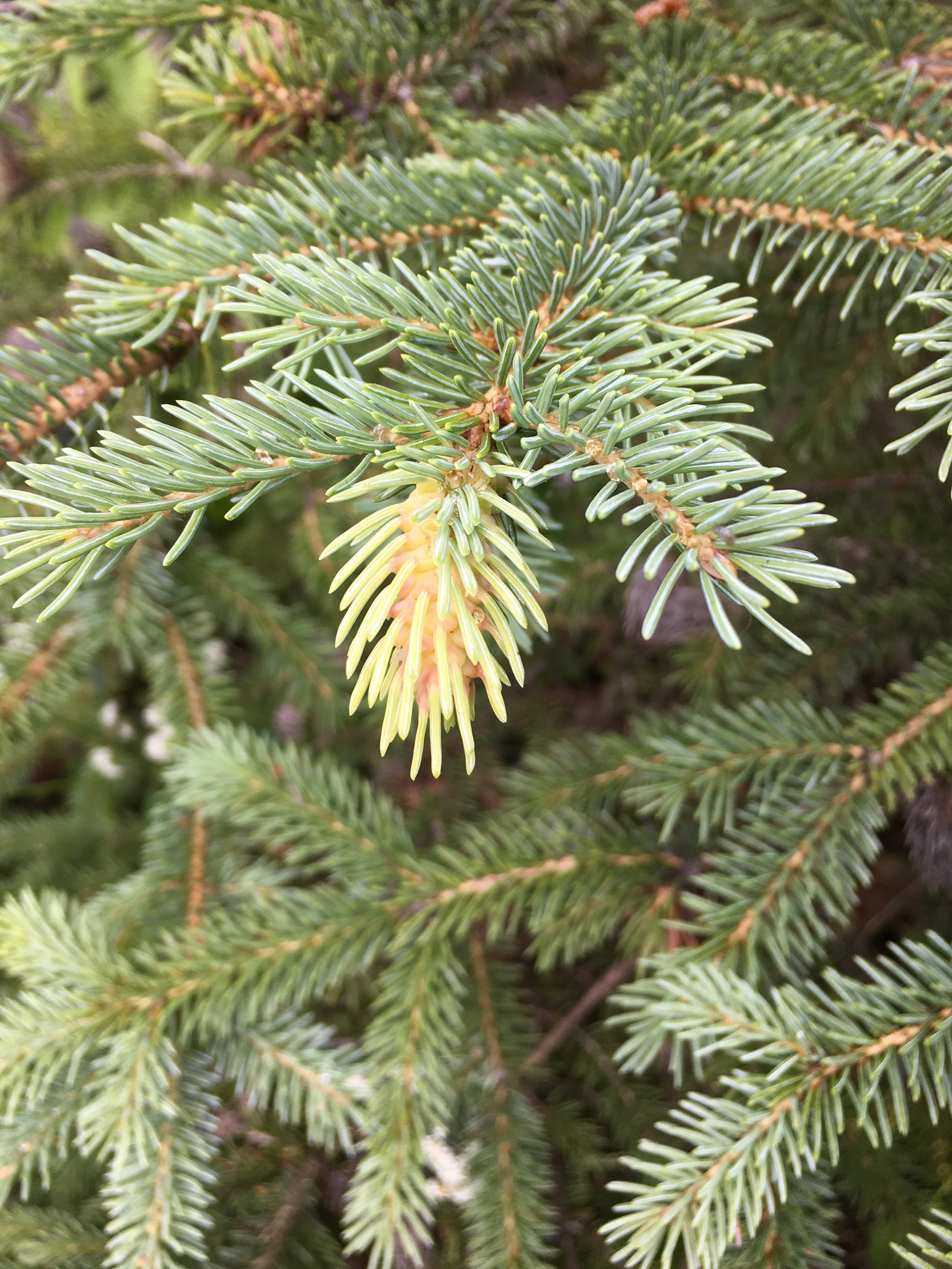
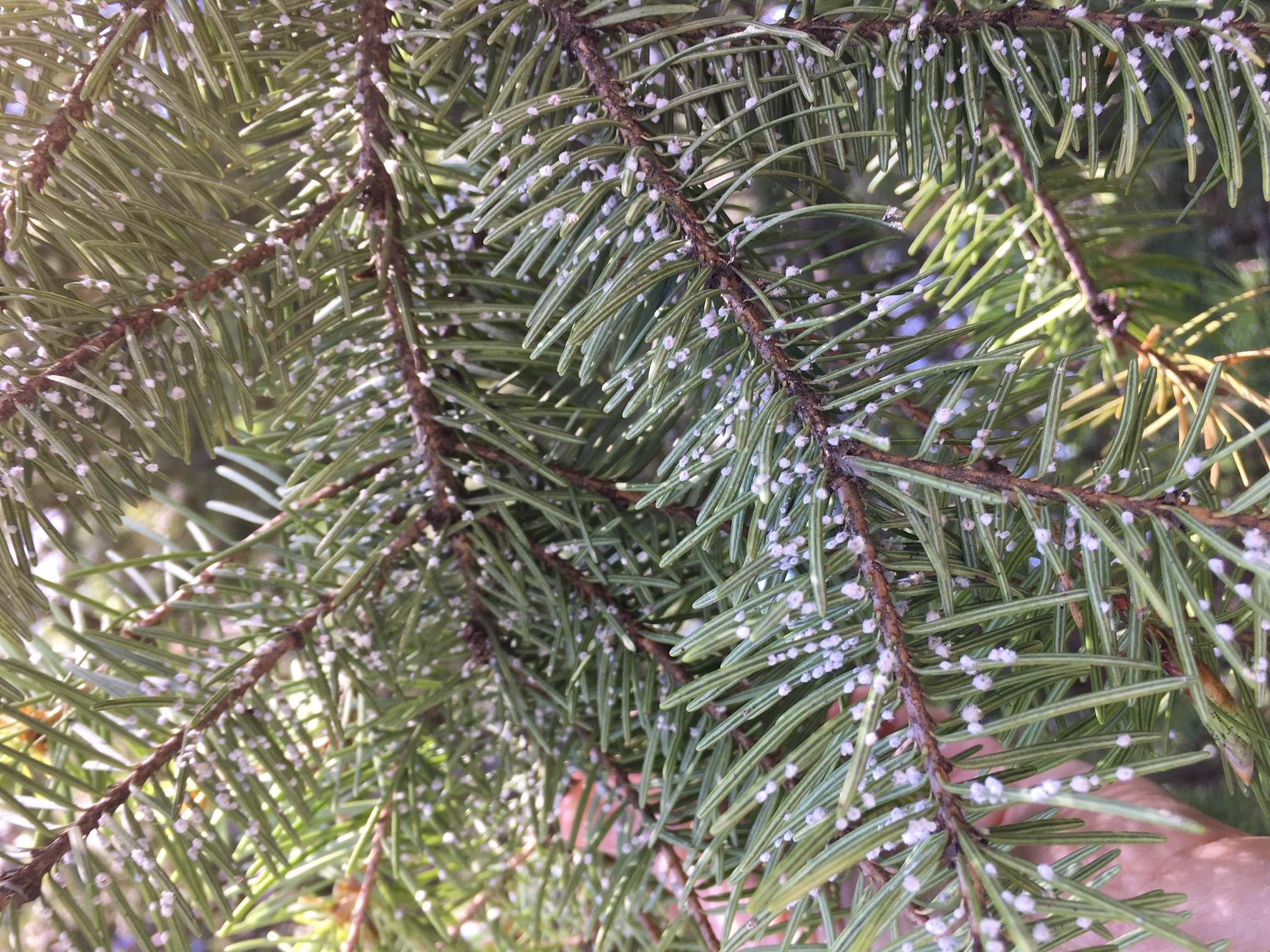
Superfamily Coccoidea
The last group of Hemiptera we will distinguish only to the superfamily level, the scale insects, or Coccoidea. Even the ranking of this taxon is somewhat uncertain. Coccoidea includes a number of families, all of which have similar characteristics. Adult females are almost always sessile and covered in a waxy dome or other wax covering. Some even live in soil. Males are usually winged, and some species may be partially or exclusively parthenogenic. Newly-hatched nymphs, or crawlers, can disperse to new plants.
Scale insects can be, as you might expect, important pests of plants in various settings. They have also been important to humans for various other reasons. For example, Kerria lacca, the lac insect, has been cultivated for production of lac resin, from which we derive lacquer. Another economically important scale insect is Dactylopius coccus, which feeds on Opuntia spp., prickly pear cactus. For a very long time, this insect was a primary source of true red fabric dye, a highly valued colour.
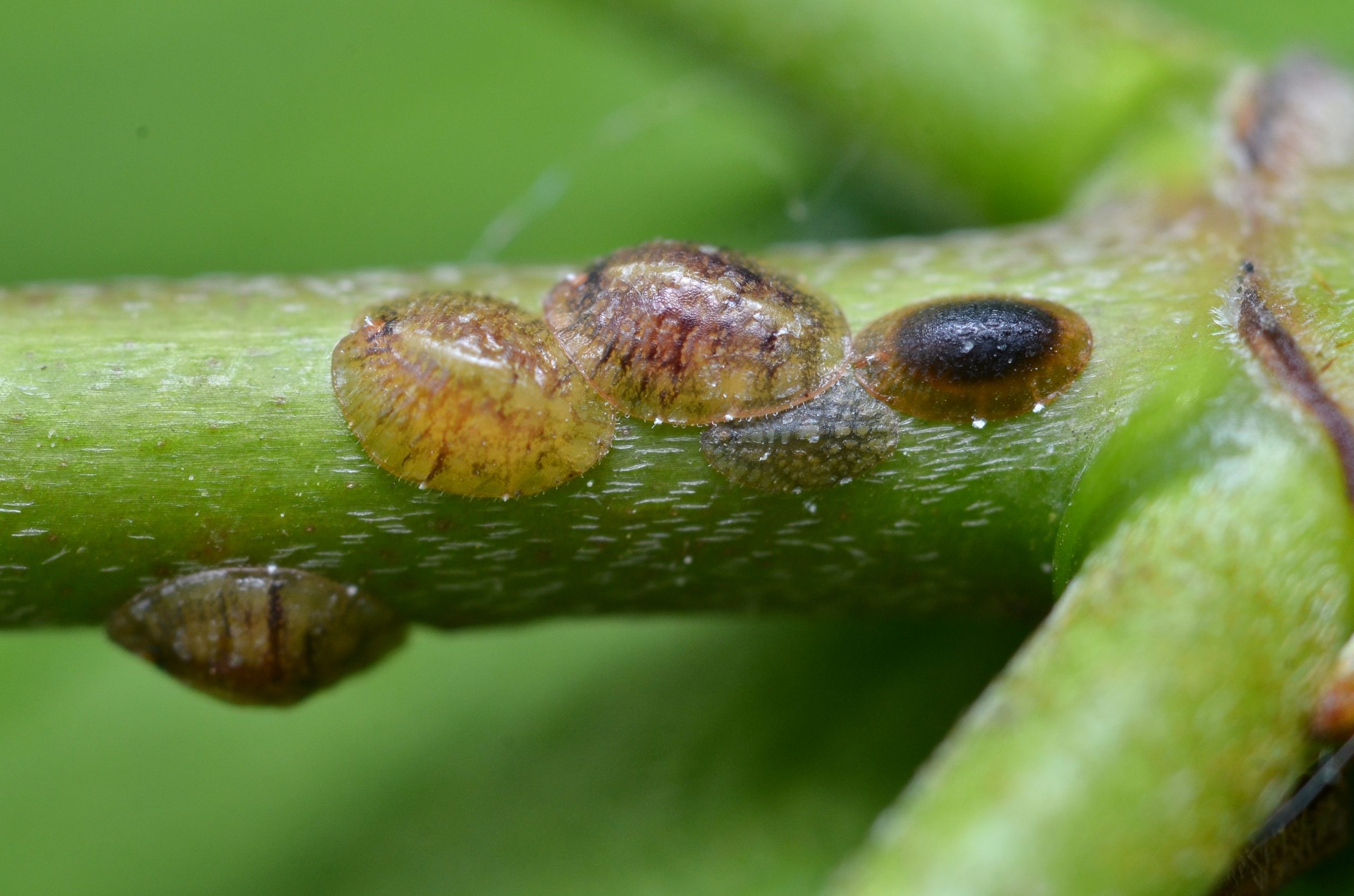
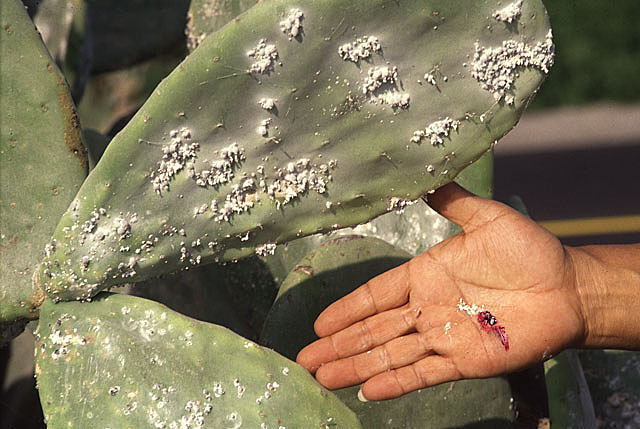
Dactylopius coccus, Dick Culbert from Gibsons, B.C., Canada, CC BY 2.0 <https://creativecommons.org/licenses/by/2.0>, via Wikimedia Commons.


Feedback/Errata